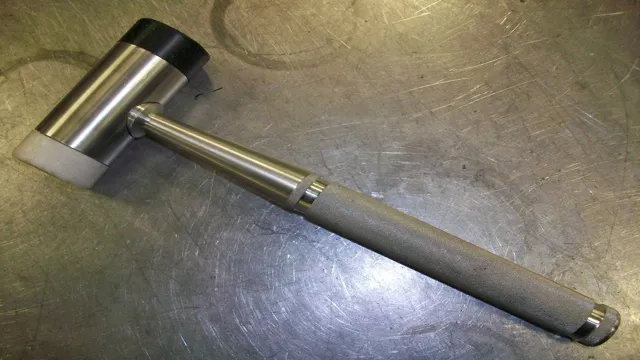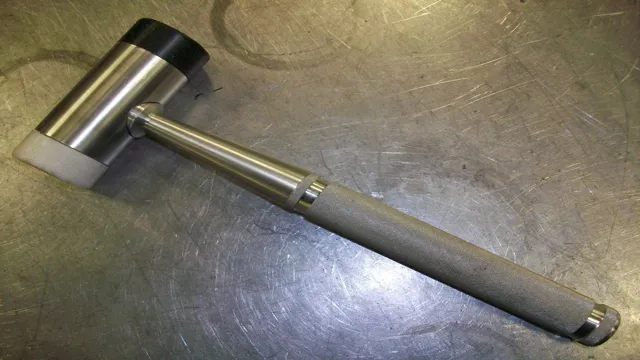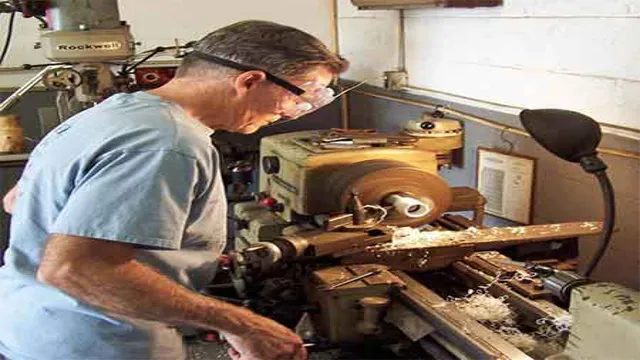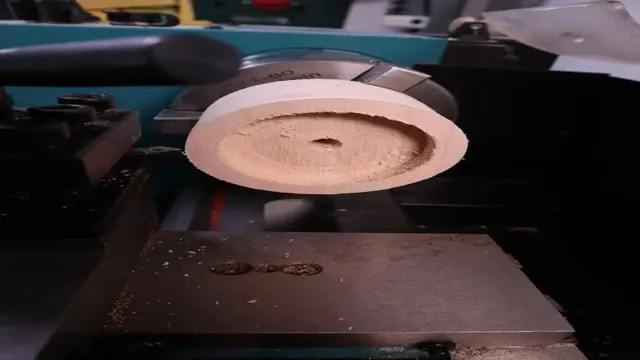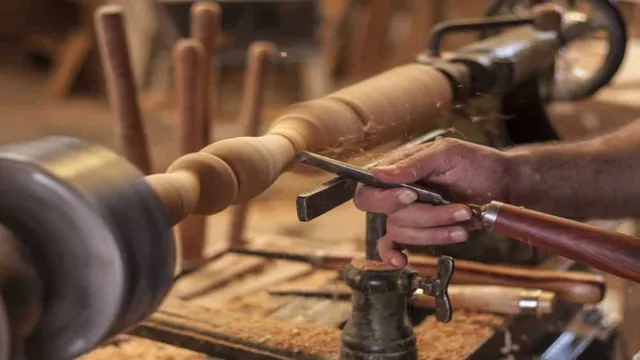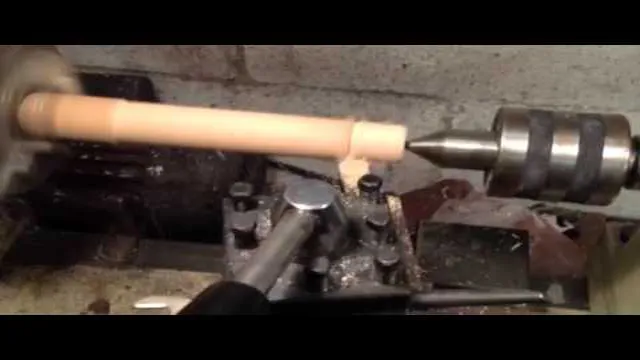How to Make a Steady Rest for Metal Lathe: A DIY Guide for Precision Turning

Have you ever found yourself needing to turn long, slender pieces of metal on your lathe, but struggling to keep it steady and secure? Perhaps you’ve looked into purchasing a steady rest, but found them to be expensive and out of your budget. Fear not, for with a few simple materials and some basic tools, you can easily make your own steady rest for your metal lathe. Not only will this save you money, but it will also give you the satisfaction of having created a custom tool that meets your specific needs.
In this blog post, we’ll walk you through the steps of how to make a steady rest for your metal lathe, so that you can take on those challenging turning projects with confidence and ease.
Understanding the Function of a Steady Rest
If you’re working with a metal lathe and need to support long and heavy workpieces, a steady rest can be a valuable tool. Steady rests are designed to prevent workpieces from bending or wobbling during machining operations, ensuring greater accuracy and smoother finishes. Making your own steady rest can be an excellent DIY project for machinists looking to save money or customize their shop tools.
To make a steady rest, you’ll need a few basic materials, such as steel stock, bearings, and threaded rods. You’ll also need to follow a set of plans or design your own based on the size and shape of the workpieces you’ll be machining. Once you’ve constructed your steady rest, be sure to test it carefully before using it on a live workpiece, making any necessary adjustments for smooth operation.
With a little patience and know-how, you can create a steady rest that will be an invaluable addition to your metalworking tool kit.
Explanation of the Steady Rest’s Purpose
A steady rest is an essential component that ensures workpiece stability during machining operations. It is typically used in lathe machines, and its primary function is to provide support to the workpiece, preventing unwanted movements throughout the machining process. This important component serves as a third hand to hold the workpiece steady, reducing vibrations, improving accuracy, and increasing safety.
The steady rest comprises of a base, a body, and arms that can be adjusted according to the needs of the specific workpiece. Without a steady rest, a workpiece may deflect or vibrate, leading to tool breakage, inaccurate machining, and even damage to the machine. By providing stability to the workpiece, a steady rest minimizes any error and ensures a smooth and precise machining operation, which is critical in many manufacturing processes.
Therefore, using a steady rest ensures that the final product meets the highest quality standards, thus guaranteeing customer satisfaction.
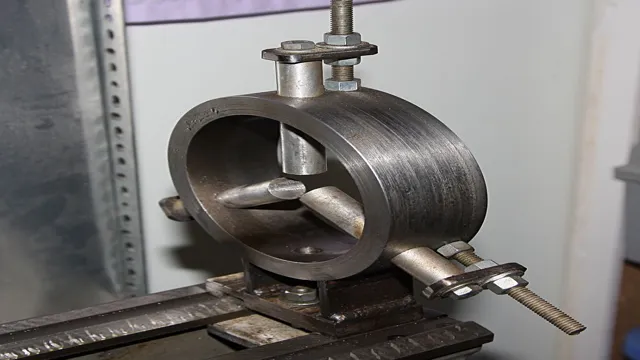
Why a Steady Rest is Useful for Metal Lathe
A metal lathe is one of the essential tools required in any machine shop. It is used to make cuts on raw materials and shape them into a custom form. A steady rest is a tool that is used to support the workpiece that needs to be cut while using a metal lathe machine.
It is handy when the workpiece is too long or too thin, and it is unstable. It is an adjustable tool that ensures that the workpiece stays in place during machining. The steady rest is a supportive tool that keeps the workpiece steady as it spins, allowing the machine operator to make more accurate and precise cuts.
In short, it helps to minimize vibration, preventing damage to the workpiece and ensuring that the machine is working efficiently. With the help of a steady rest, a machinist can complete any project with the highest level of precision.
Identifying the Materials Needed to Make a Steady Rest
If you are looking into making a steady rest for your metal lathe, there are several materials you will need to get your hands on. First and foremost, you will need a base. This can be crafted out of aluminum or steel.
Additionally, you will need a clamp made from either aluminum or brass. The clamp will hold the steady rest onto the bed of the lathe. You will also need three or four guides made from steel or aluminum.
The guides hold the workpiece in place while it is being turned. Other necessary materials include bolts, nuts, and washers. These are used to secure the guides to the clamp.
Lastly, you may need a few small metal strips to help prevent marring on the workpiece. With these materials and a little bit of know-how, you can create a sturdy and reliable steady rest that will help you produce high-quality metalwork with ease.
List of Materials Required
When it comes to making a steady rest, you’ll need a few key materials to ensure a successful build. The first and most important material is the metal itself. You’ll need a sturdy metal material such as steel or aluminum, as this will be the foundation of your steady rest.
Additionally, you’ll need a few smaller materials such as bolts, screws, and washers to keep everything in place and secure. Depending on the design you choose, you may also need bearings or other hardware to control movement and ensure the smooth operation of your steady rest. While the specific materials you require may differ depending on your design and approach, it’s essential to identify all the necessary components before you begin your build.
This will ensure that you have everything you need to create a strong and reliable steady rest that will last for years to come. So, are you ready to start your build and get to work?
Additional Tools Required to Build a Steady Rest
When building a steady rest, additional tools and materials are required to complete the project. First, you’ll need welding equipment to weld the different parts together. You’ll also need a metal cutting saw, such as a bandsaw, to cut the metal bars to size.
Other tools required include a drill press to make the necessary holes and a tap and die set to thread the bolts for assembly. In terms of materials, you’ll need metal bars, plates, and bolts to construct the steady rest. Additionally, you’ll need bearings or bushings to support the spindle that the steady rest will hold.
By identifying the required tools and materials beforehand, you can ensure that you have everything you need to make a sturdy and reliable steady rest.
Constructing Your Steady Rest
A steady rest is a crucial accessory for any metal lathe. It helps keep long and slim workpieces steady in place during turning and reduces unwanted vibration or chatter. While there are many commercial steady rests available, you can also make one yourself easily and affordably.
To make a simple steady rest, you will need a few pieces of metal, such as a rod, a base plate, and two brackets. First, drill some holes in the base plate and mount the brackets in place. Then, insert the rod in between the brackets, and secure it with a nut at the top.
You can adjust the nut to apply more or less pressure on the workpiece, depending on how much support it needs. You can also add some padding, such as rubber or leather, to the brackets and the rod to prevent damage to your workpiece. With a steady rest, you can turn longer and more complex shapes confidently and safely on your metal lathe.
Step-by-Step Guide to Building Your Steady Rest
Are you in need of a steady rest for your lathe but don’t want to break the bank by purchasing one? Why not build your own! With a few supplies and some basic woodworking skills, constructing your own steady rest can be easily achievable. First, gather the necessary materials such as threaded rods, plywood, and metal bearings. Cut your plywood boards to the desired size of your steady rest and drill the holes where the bearings will go.
Once the holes are drilled, glue the bearings in place. Next, cut your threaded rod to the length needed and attach them to your plywood base. Finally, construct the arms of the steady rest using plywood and screws.
Your homemade steady rest is now complete and ready to use on your lathe. Not only is this project cost-effective, but it also allows for customization to fit your specific lathe needs. Give it a try and see the benefits for yourself!
Useful Tips for Making Your Steady Rest More Effective
When it comes to constructing your steady rest, there are a few tips that you can use to make it more effective. The first step is to ensure that your steady rest is made from the right materials and that it is built to last. Typically, most steady rests are made from cast iron or steel, which are both strong and durable materials that can withstand the pressures of machining.
Additionally, you should make sure that your steady rest is set up properly and that it is adjustable to the size of your workpiece. This will ensure that your steady rest can hold and support the workpiece effectively, while also reducing the risk of your workpiece becoming misaligned or damaged during machining. By following these simple tips, you can construct your steady rest in such a way that it is both reliable and effective for your machining needs.
Using Your Steady Rest on Your Metal Lathe
If you’re looking to increase the versatility of your metal lathe, making a steady rest is a great investment. A steady rest is a tool that helps support and stabilize long workpieces during the turning process, reducing vibration and enhancing precision. Fortunately, making a steady rest for your metal lathe is a relatively straightforward process.
All you need to do is gather the necessary materials and follow some basic steps. To start, acquire a piece of metal tubing or pipe that is just slightly larger than your lathe’s widest piece of stock. Drill and tap four holes into the tubing, then attach it to a base plate.
Install small wheels or bearings on the underside of the base plate to help with movement. Finally, mount the steady rest to your lathe’s tool post and adjust the support rollers to fit snugly against your workpiece. With a newfound stability provided by your new steady rest, you’ll be able to tackle even the most challenging lathe projects with ease.
How to Install Your Steady Rest on Your Lathe
Installing your steady rest on your metal lathe can significantly improve your work and streamline your workflow. It provides support for long and thin workpieces that tend to bend or vibrate while turning, ensuring smooth and accurate cuts. Depending on your lathe’s model, installing a steady rest can vary, but the process is generally straightforward.
First, locate the mounting hole for your steady rest on your lathe’s bed. Then, insert the mounting bolts and tighten them securely using a wrench. Make sure your steady rest is aligned and level with your lathe’s bed, and adjust the jaws to fit your workpiece firmly.
Once you have your steady rest mounted correctly, it’s essential to use your steady rest correctly. Adjust the jaws to fit your workpiece snugly, not too loose or too tight, to prevent any damage to your workpiece. In conclusion, adding a steady rest to your metal lathe can make your turning operations more manageable, faster, and more accurate.
How to Use Your Steady Rest When Turning Metal Pieces
If you’re an avid metalworker, you know that having a steady hand is crucial to producing quality results. But sometimes, that’s not enough to prevent wobbling or vibration during the lathe turning process. That’s where a steady rest can come in handy.
An essential tool for any lathe, the steady rest works by supporting the piece you’re working on, reducing vibrations, and preventing the piece from moving or shifting, resulting in a smoother, more precise finish. To use your steady rest effectively, start by positioning it close to your cutting tool and moving it up or down depending on the thickness of your piece. Adjust the arms of the steady rest and tighten the screws until the piece is secure but not too tight.
Once you’ve checked that everything is stable, start turning your piece, and your steady rest will keep it in place. Remember to keep an eye on your piece’s temperature, though, as too much pressure from the steady rest can cause overheating and other issues. All in all, a steady rest is an indispensable tool for any serious metalworker, ensuring that your hard work and dedication translate into high-quality, professional results.
Conclusion and Final Thoughts
In conclusion, creating your own steady rest for your metal lathe might seem daunting, but it’s actually a great DIY project to tackle. Not only will you save money, but you’ll also have a custom piece of equipment that fits your specific needs. Remember, the key to a successful steady rest is stability and adjustability.
With a bit of ingenuity and a few simple materials, you’ll be on your way to smooth and precise turning in no time. So grab your tools and get to work, because a steady rest isn’t just a helpful accessory, it’s a game-changer for your metalworking endeavors!”
FAQs
What is a steady rest for a metal lathe used for?
A steady rest is used to support a long, thin workpiece during machining, to prevent it from deflecting or bending under the force of the cutting tool.
What are the main components of a homemade steady rest for a metal lathe?
The main components of a homemade steady rest are a base plate, a support arm, and one or more adjustable fingers that press against the workpiece to hold it steady.
What materials can be used to make a homemade steady rest for a metal lathe?
Common materials for a homemade steady rest include aluminum or steel stock, brass or plastic bushings, and threaded rod or bolts for adjustability.
What are some tips for aligning and adjusting a steady rest on a metal lathe?
It is important to align the steady rest with the lathe bed and to adjust the fingers to avoid putting too much pressure on the workpiece. Small adjustments can be made during machining to keep the workpiece steady.
Can a steady rest be used with both round and square workpieces?
Yes, a steady rest can be adjusted to accommodate both round and square workpieces, as well as irregular shapes with custom-fabricated fingers.
How can a steady rest improve the accuracy and precision of a metal lathe?
By providing a stable support for the workpiece, a steady rest can help to reduce vibration, chatter, and other sources of inaccuracy, leading to cleaner cuts and higher-quality finished products.
Are there any safety considerations when using a steady rest on a metal lathe?
Yes, it is important to avoid wearing loose clothing or jewelry that could get caught in the lathe or steady rest, and to keep long hair tied back. Eye protection should also be worn, particularly if using coolant.

